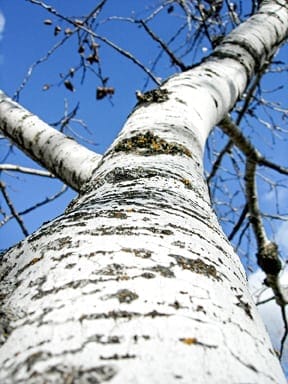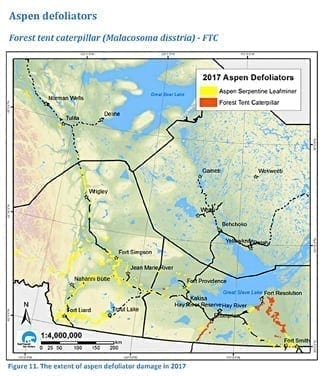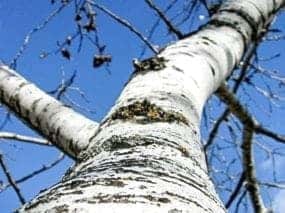The territorial government has been monitoring a decline in trembling aspens, also known as white poplars, that is currently taking place mostly within the southern Deh Cho region.
SA����Ӱ�Ӵ�ý�Our current efforts focus on mapping the full extent of this phenomenon,SA����Ӱ�Ӵ�ý� stated Jacob Olesinski, a forest ecologist with the Department of Environment and Natural Resources, in an email.

SA����Ӱ�Ӵ�ý�So far, we have mapped areas in the Liard Valley and near Fort Simpson totaling over 35,000 hectares and over 1,200 hectares in the South Slave.SA����Ӱ�Ӵ�ý�
Natural Resources CanadaSA����Ӱ�Ӵ�ý�s website states there has been widespread declines in trembling aspen across west-central Canada, much of which is attributable to droughts. Olesinski says the case is a little different in the NWT.
Olesinski says the die-off is likely due to shifts in the saturation of ground with water in the area.
SA����Ӱ�Ӵ�ý�It's not a typical drought-caused die-back,SA����Ӱ�Ӵ�ý� stated Olesinski, SA����Ӱ�Ӵ�ý�But rather a complex mixed bag effect of various environmental factors including local flooding and also drought that was prevalent in the Deh Cho over the last few years.SA����Ӱ�Ӵ�ý�
SA����Ӱ�Ӵ�ý�ENR is keeping an eye on this and our efforts are focused on mapping the full extent of the decline and better understanding its causes.SA����Ӱ�Ӵ�ý�
According to Olesinski, there have also been tent caterpillar infestations noticed over the years among trembling aspen, and ENR is monitoring these as well.
These infestations donSA����Ӱ�Ӵ�ý�t kill the trees, he wrote, but they do consume much of the treeSA����Ӱ�Ӵ�ý�s foliage, which hampers the treesSA����Ӱ�Ӵ�ý� growth.

The only other tent caterpillar infestation on record in the NWT was in the Deh Cho during the mid-90s. The current spread of infestations, which is in the South Slave region, began in 2015, expanding along the Slave River and Fort Smith area the next year. Defoliation from tent caterpillars declined by 58 per cent last year.
There are several other insects around, as well, which defoliate aspens.
According to a map released as part of ENRSA����Ӱ�Ӵ�ý�s 2017 Forest Health Report, much of the aspen die-off has been observed around Fort Liard, Nahanni Butte, Jean Marie River and Trout Lake. Olesinski says an updated Forest Health Report is due out next month.
Officials at Natural Resources Canada, as well as staff at the Northern Farm Training Institute, did not return requests for comment by press time.



